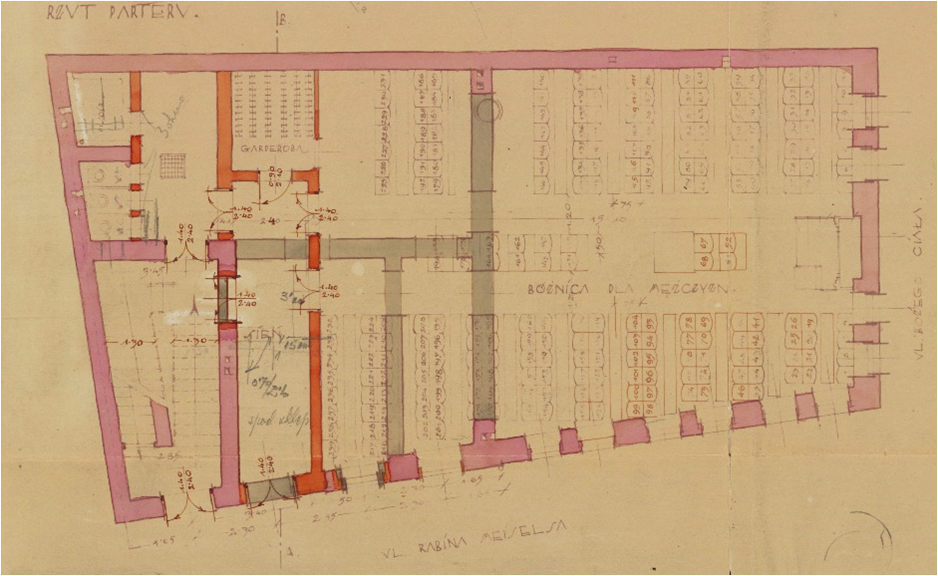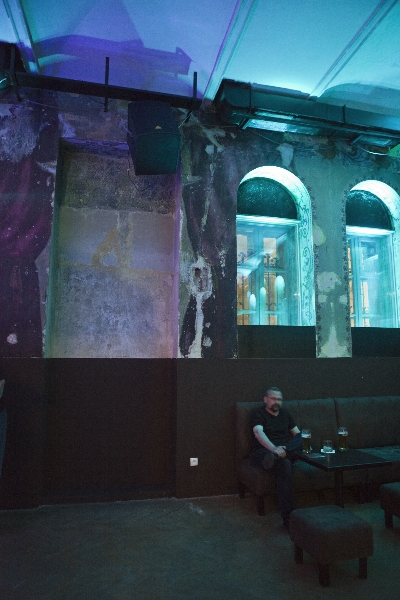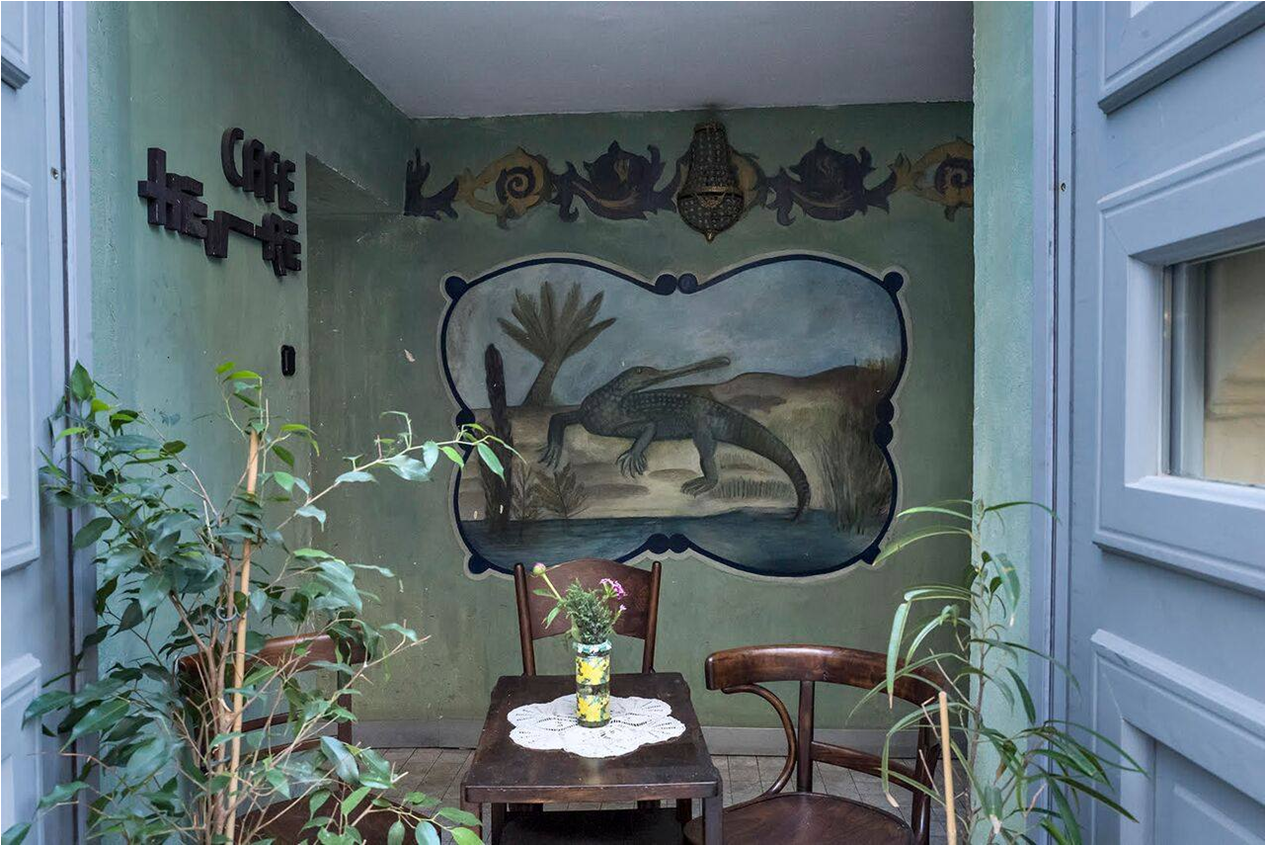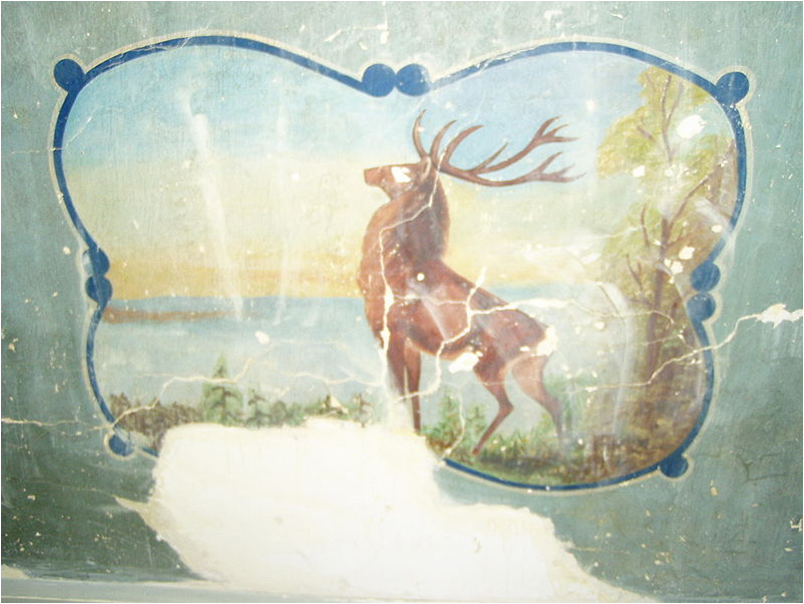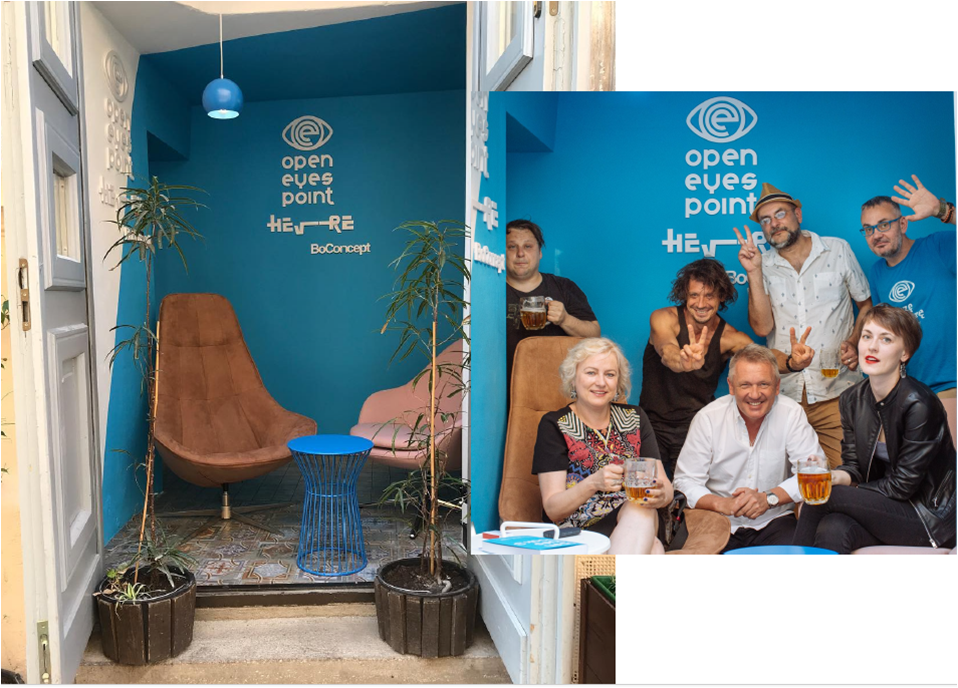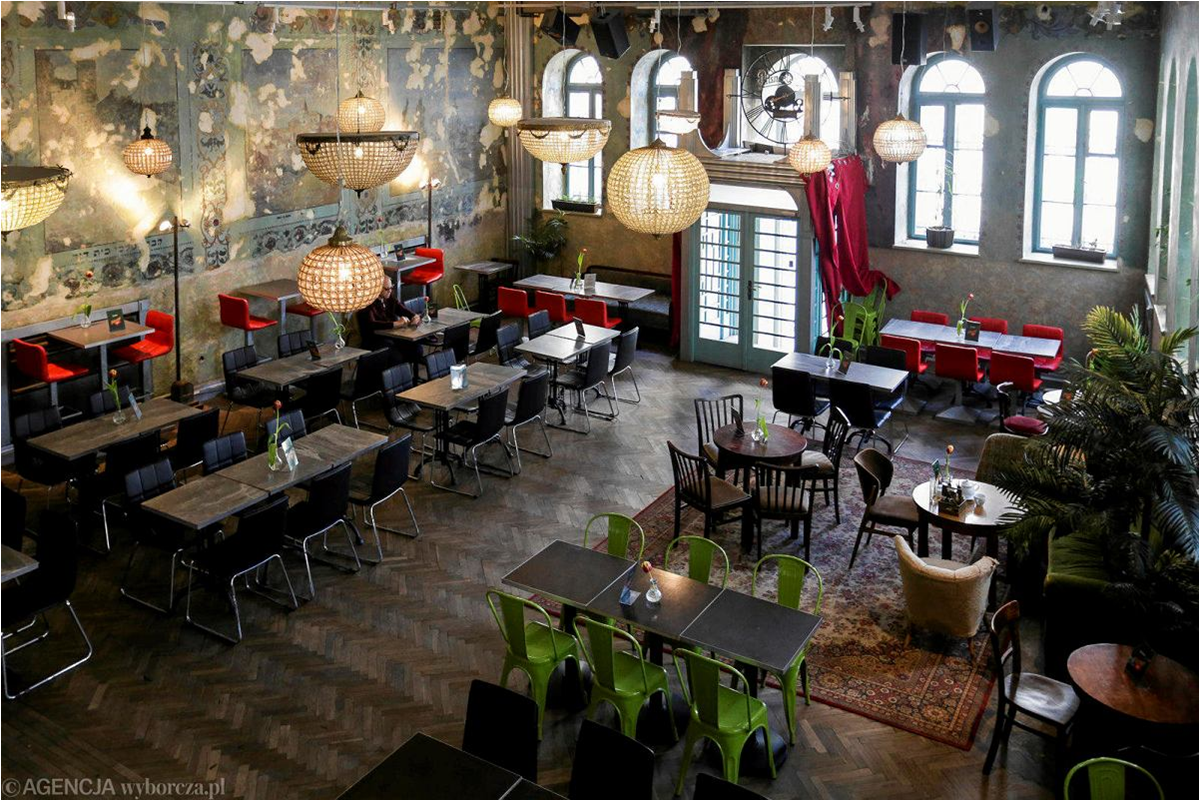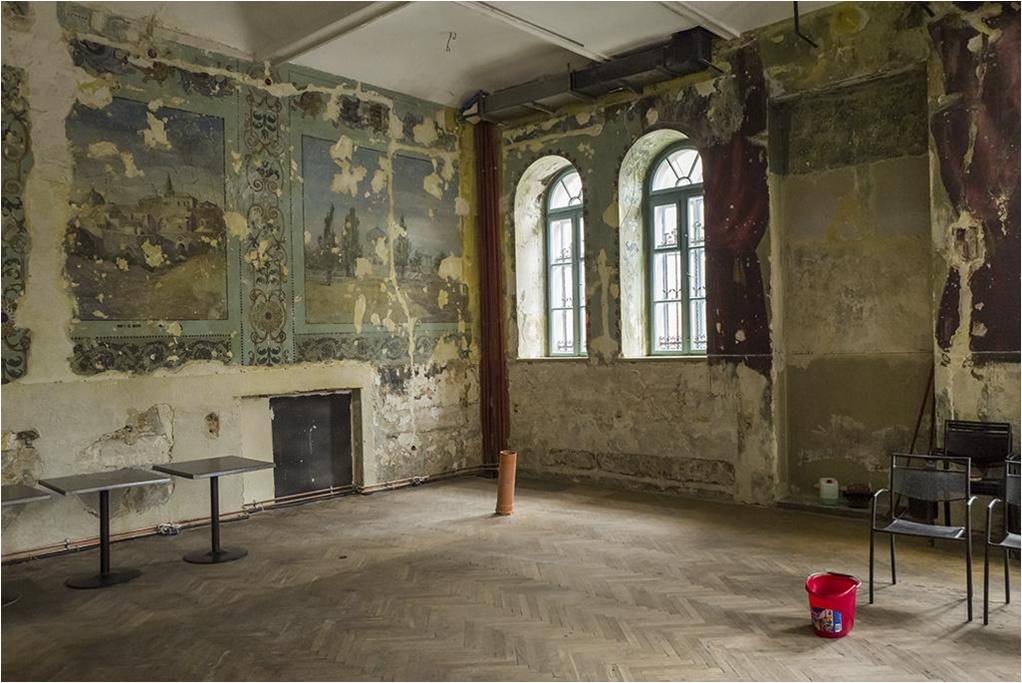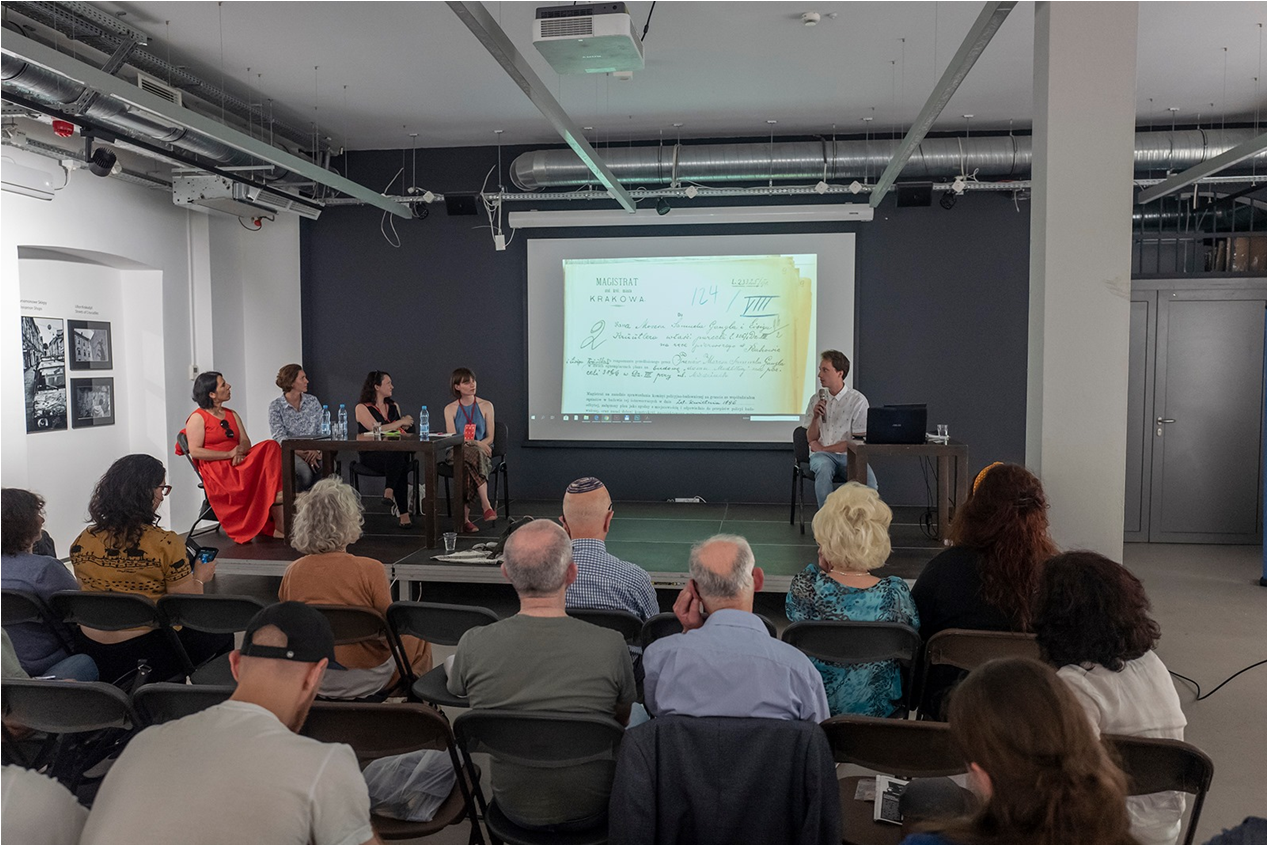The project revolves around the former Beit Midrash (Prayer House) at 18 Meiselsa Street, built in 1896 on the initiative of the Psalm Society (Chewra Tehilim), according to the design of Nachman Kapald, a well-known Jewish architect.
The building was impressive, not least in size – the women’s hall on the upper floor could accommodate over three hundred, and the men’s hall on the ground floor could hold over two hundred and thirty.
Kazimierz, the historical Jewish district, is part of the UNESCO World Heritage. The building itself, destroyed during the war, was returned to the Jewish Religious Community in Krakow in 2001, according to the law on the relationship between the state and Jewish religious communities in Poland (1997). Until 2006, it housed the Krakowiacy song and dance ensemble. Two years later, 19th and 20th-century polychromes were discovered, containing floral and animalistic elements, views of Jerusalem, and Hebrew inscriptions.

In 2012, the progressive Jewish community Beit Kraków unsuccessfully attempted to rent the space for sacred, educational, and cultural purposes. Despite being listed as a historic monument (2013, registration number A-1343/M), this architectural unique was leased for gastronomic and entertainment purposes – first the Mezcal Disco, and subsequently as Hevre Bar.
Three years later, in 2016, at the request of the Hevre bar, a wall was pierced and a door was installed at the location of the former niche that would house the Aaron HaKodesh, with the approval of the local Jewish community and the Krakow conservator of monuments, creating a second entrance to the building (later adorned with a red curtain). More problematic gestures, interpreted as manifestations of cultural appropriation, followed: paintings imitating – or rather parodying – the original preserved decorations appeared on the walls. Where memorial plaques for the deceased were once located, beer menus for the establishment were placed. The name of the venue, in colloquial Hebrew, means “a pack” or “a team” of friends. The original purpose of the building, its history, and its role in the religious life of Kazimierz are thus symbolically secularized or even trivialized, and the alleged preservation of Jewish heritage appears to be a superficial, commercially viable action, supported by the authority of many entities, institutions, or initiatives.
Our activities focused on this place – aimed at raising awareness of its historical, cultural, and religious significance – began in 2015.
In 2017, 150 small interventions took place: reading psalms or poetry inspired by them in Polish, Hebrew, and English.
In 2018, under the slogan #RememberChewra, we organized a public discussion about its history and future.
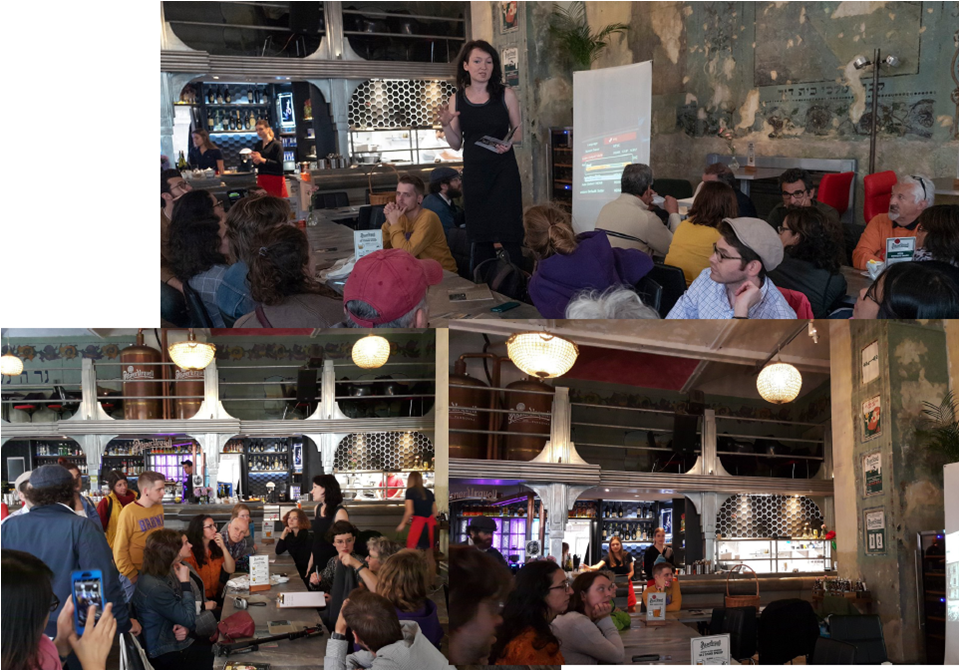
In 2019, we initiated two actions: a panel discussion with the participation of Dr. Edyta Gawron, a historian, Magda Rubenfeld Koralewska, co-director of FestivALT, and a representative of the municipal conservator’s office, as well as an artistic intervention involving the audience, consisting of setting up a model of the destroyed wall fragment along with information about it. The model sensitized passersby and city residents throughout the summer to the issues of the building’s history and substance.
In 2020, Kamila Czosnyk, dressed in Hasidic black and white, performed a series of The Last Dance performances in the building under club lights: clad in Hasidic black and white, she danced to the techno remix of Psalm 74 about the destruction of the temple, authored by cantor Rachel Weston.
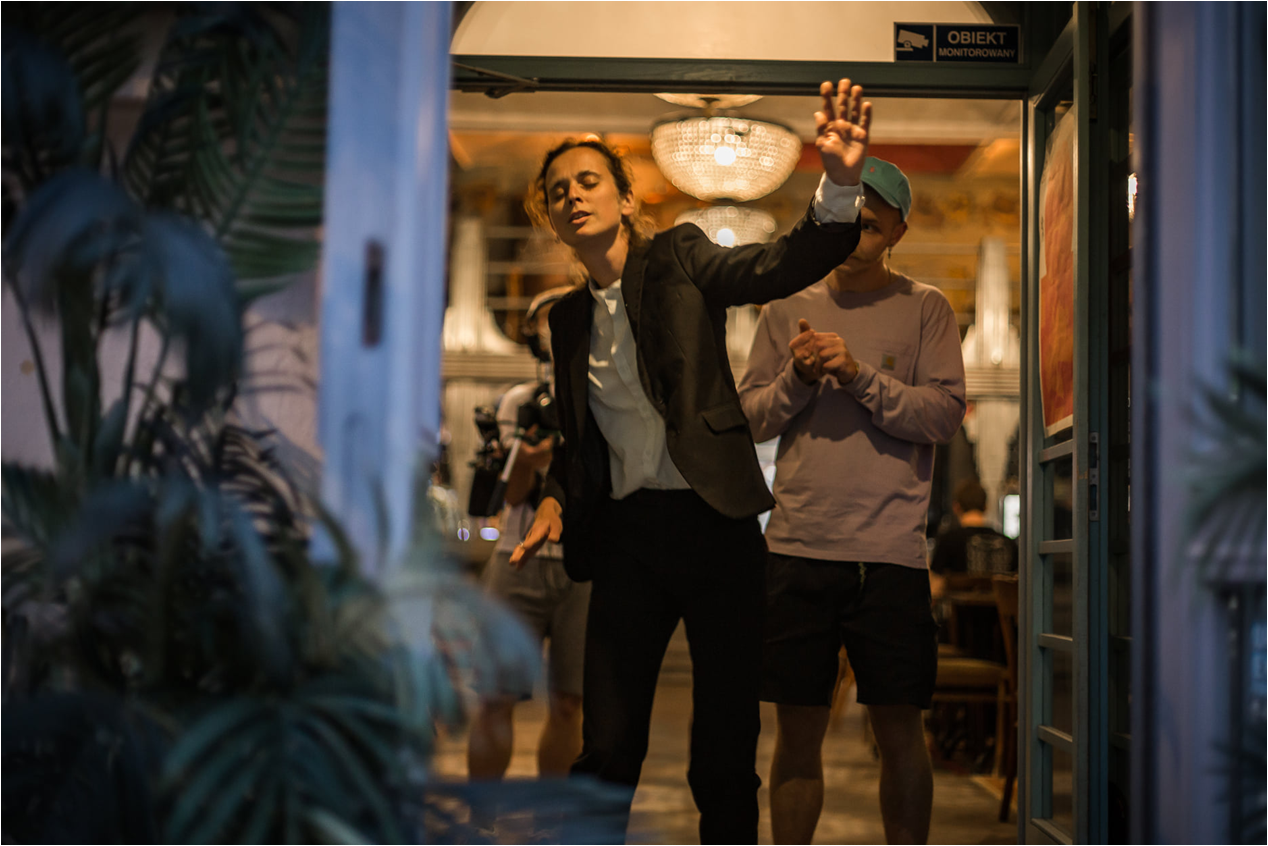

Read also:
- Profile „Remember Chewra Thilim” on Facebook;
- Disco opening at former Jewish learning center stirs controversy on Jewish Telegraphic Agency, May 12, 2013;
- Opening of a discotheque in a former Beit Midrash in Krakow on Beit Kraków, May 13 2013.
- Protest after Krakow synagogue turned into nightclub on Polish Radio, May 13, 2013;
- Krakow Jews seek to make ends meet by Nissan Tzur for Jerusalem Post, May 14, 2013;
- Historic Krakow Jewish Site Becomes a Nightclub by Stephanie Butnick for TabletMag, May 14, 2013;
- Open letter to the President of the Jewish Community of Krakow on the fate of the Chewra Thilim Synagogue by Arkadiusz Radwan for Dziennik Polski, May 21, 2013;
- Krakow Beit Midrash now turned into a Disco on Jewish Heritage Europe from May 9, 2013;
- Artystyczna interwencja na Kazimierzu [Pol. “Artistic invervention at Kazimierz”] by Aleksandra Suwała for Dziennik Polski, June 30, 2017;
- Foundation for keeping Jewish heritage unveils map of Europe’s synagogues by Cnaan Lipshiz for Jerusalem Post, February 11, 2018;
- Hevre. Obiad wśród kufli na przecięciu dwóch kultur [Pol. “Hevre. Dinner among mugfuls on the intersection of two cultures”] by Wojciech Nowicki for Gazeta Wyborcza, March 25, 2018;
- This former Krakow synagogue is now a bar, and Polish Jews are protesting by Cnaan Lipshiza for Jewish Telegraphic Agecy, June 14, 2019;
- Odpowiedź rabina Boaza Gadki w sprawie użytkowania synagogi przy ul Meisselsa 18 [Pol. “Response from Rabbi Boaz Gadka regarding the use of the synagogue at 18 Meisselsa Street”] published on the Facebook profile of the Jewish Religious Congregation in Kraków, July 5, 2019.
-
29 June 1714:00
“150 small interventions” – intervention
Read more -
30 June 1815:00
#RememberChewa – art intervention
Read more -
25 June 1913:00
#RememberChewa – panel discussion
Read more -
25 June 1915:30
#RememberChewa – intervention
Read more -
27 June 2121:00
“The Last Dance” Czosnyk – performance
Read more -
29 June 2121:00
“The Last Dance” Czosnyk – performance
Read more -
30 June 2121:00
“The Last Dance” Czosnyk – performance
Read more -
26 June 2316:30
“(non)practices of memory” Grajny-Brzezińska / Legierski / Grochal / Rubenfeld – conversation
Read more -
25 June 2412:00
“Beit Midrash of the Future? Reimagining Chewra Thilim” Cegła / Janus – workshop
Read more

